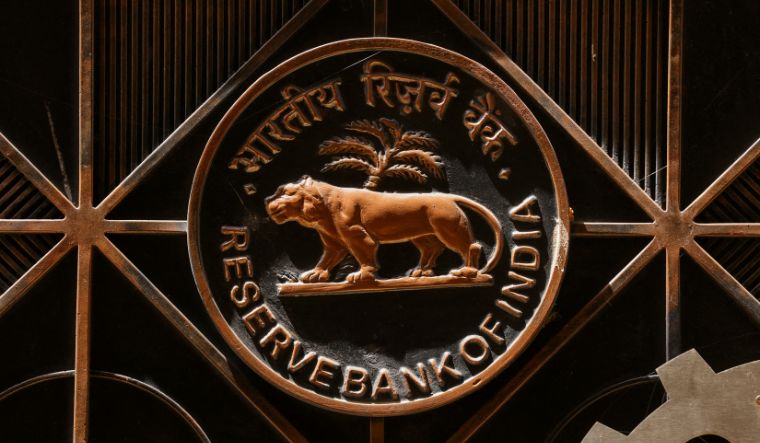Yet another meeting of the Reserve Bank's monetary policy committee has come and gone, and there is yet again a status quo on benchmark interest rates as well as the stance of the policy. The MPC left the repo rate unchanged at 6.50 per cent for the eighth consecutive time, while also maintaining the stance to remain focused on the withdrawal of accommodation to ensure anchoring of inflation expectations and fuller policy transmission.
The RBI last raised the repo rate, which is the rate at which it lends money to commercial banks, in February 2023. That was a period when inflation in India and around the world had surged post-Covid and the advanced economies were staring at a looming recession amid high interest rates. Over the last several months though, inflation has cooled.
In India, the April CPI (consumer price index) inflation came in at 4.83 per cent, an 11-month low. At the same time, however, food inflation has remained a concern, growing 8.7 per cent in the same period.
Meanwhile, India's economic growth remains robust; GDP grew 8.2 per cent in the year ended March 2024. So, the central bank can focus on getting inflation at or closer to the targeted 4 per cent on a sustained basis.
As RBI Governor Shaktikanta Das put it in his assessment, they are on the right track on inflation, but there is still work to be done. Globally, there are concerns that the last mile of disinflation might be protracted and arduous amidst continuing geopolitical conflicts, supply disruptions and commodity price volatility, he pointed out.
"In India, with growth holding firm, monetary policy has greater elbow room to pursue price stability to ensure that inflation aligns to the target on a durable basis. In its current setting, monetary policy remains squarely focused on price stability to effectively anchor inflation expectations and provide the required foundation for sustained growth over a period of time," said Das.
In the backdrop of the strong growth projected by the National Statistical Office, the Reserve Bank has revised its real GDP growth expectations for 2024-25 to 7.2 per cent from 7.0 per cent it had forecast earlier. Should this materialise, this will be the fourth consecutive year that India's GDP has grown at or over 7 per cent.
At the same time, it has retained its forecast for the CPI inflation to average 4.5 per cent in the current financial year. CPI or retail inflation is seen at 4.9 per cent in the current April-June quarter, declining to 3.8 per cent in the September quarter, but then climbing again to 4.6 per cent in the December quarter, before settling in at 4.5 per cent in January-March 2025, according to RBI's assessment.
After a poor monsoon last year, the Indian Meteorological Department (IMD) has predicted a good monsoon season this year, which should boost reservoir levels and kharif crop production. Strengthening agricultural activity will, in turn, boost rural consumption.
But, the exceptionally hot summer season and low reservoir levels may put stress on the summer crop of vegetables and fruits, noted Das. Global food prices have started inching up, he observed, adding that prices of industrial metals have registered double-digit growth so far in the calendar year 2024.
"These trends, if sustained, could accentuate the recent uptick in input cost conditions for firms," said Das.
While core inflation has softened, how it pans out ahead, will also have to be closely watched.
Central banks, especially in emerging markets, often follow global central banks as any rate movement in advanced economies has a bearing on foreign fund flows. The European Central Bank (ECB) on Thursday lowered its record-high deposit rate by 25 basis points to 3.75 per cent.
The US Federal Reserve too is expected to cut its interest rates this year. But, in the backdrop of the stalling of inflation decline in recent months, the Fed has signalled its in no rush to do so.
Das stressed on Friday that while the MPC does consider the impact of monetary policy in advanced economies on Indian markets, its actions are primarily determined by domestic growth-inflation conditions and the outlook.
"I would like to unambiguously state that while we do keep a watch on whether clouds are building up or clearing out in the distant horizon, we play the game according to the local weather and pitch conditions."
During the current financial year so far, system liquidity transited from surplus to deficit conditions, and back to surplus in early June. The Reserve Bank will continue to be nimble and flexible in its liquidity management through main and fine-tuning operations in both repo and reverse repo, he said.
"We will deploy an appropriate mix of instruments to modulate both frictional and durable liquidity so as to ensure that money market interest rates evolve in an orderly manner which preserves financial stability," he voiced.
What prompted RBI to keep repo rate unchanged for eighth time in a row
India's economic growth remains robust

TAGS
Join our WhatsApp Channel to get the latest news, exclusives and videos on WhatsApp
read more
-

Who is attorney Brooke Rollins? Trump's agriculture secretary pick
-

Jamiat Ulama-i-Hind chief rips into PM Modi’s remarks on Waqf law
-

“You've been blaming me...”: Music director Devi Sri Prasad takes a dig at 'Pushpa 2' producers
-

IPL mega auction: Rishabh Pant, Shreyas Iyer fetch record bids; unexpected windfall for Venkatesh
-

5 stars emerge in NASA Space Apps Challenge: Kerala, Karnataka, Gujarat, Maharashtra, and Ladakh entries earn laurels
*Articles appearing as INFOCUS/THE WEEK FOCUS are marketing initiatives

